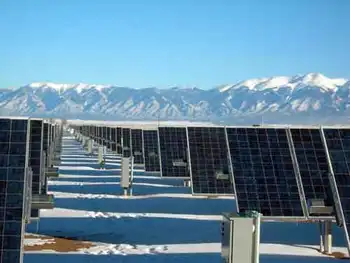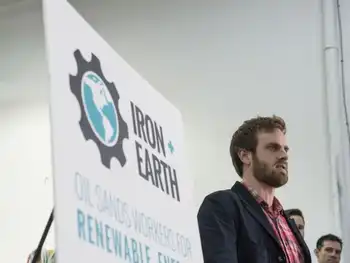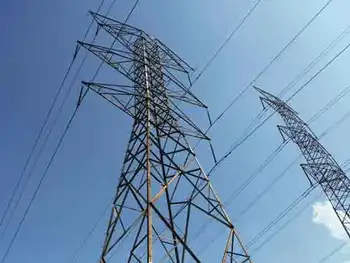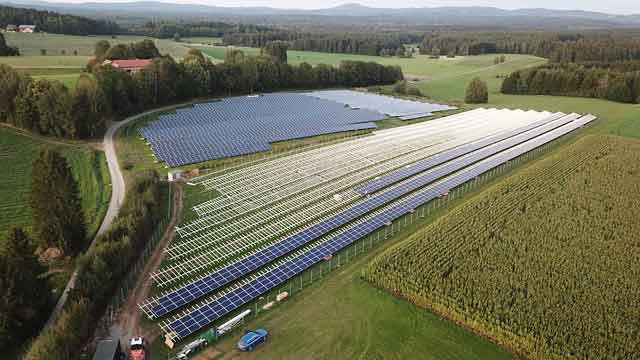Pennsylvania Home to the First 100% Solar, Marriott-Branded U.S. Hotel

Protective Relay Training - Basic
Our customized live online or in‑person group training can be delivered to your staff at your location.

- Live Online
- 12 hours Instructor-led
- Group Training Available
Courtyard by Marriott Lancaster Solar Array delivers 100% renewable electricity via photovoltaic panels at Greenfield Corporate Center, Pennsylvania, a High Hotels and Marriott sustainability initiative reducing grid demand and selling excess power for efficient operations.
Key Points
A $1.5M PV installation powering the 133-room hotel with 100% renewable electricity in Greenfield Center, Lancaster.
✅ 2,700 PV panels generate 1,239,000 kWh annually
✅ First Marriott in the US with 100% solar electricity
✅ $504,900 CFA grant; excess power sold to the utility
High Hotels Ltd., a hotel developer and operator, recently announced it is installing a $1.5 million solar array that will generate 100% of the electrical power required to operate one of its existing hotels in Greenfield Corporate Center. The completed installation will make the 133-room Courtyard by Marriott-Lancaster the first Marriott-branded hotel in the United States with 100% of its electricity needs generated from solar power. It is also believed to be the first solar array in the country installed for the sole purpose of generating 100% of the electricity needs of a hotel, mirroring how other firms are commissioning their first solar power plant to meet sustainability goals.
“This is an exciting approach to addressing our energy needs that aligns very well with High’s commitment to environmental stewardship,”
“We’ve been advancing many environmentally responsible practices across our hotel portfolio, including converting the interior and exterior lighting at the Lancaster Courtyard to LED, which will lower electricity demand by 15%,” said Russ Urban, president of High Hotels. “Installing solar is another important step in this progression, and we will look to apply lessons from this as we expand our portfolio of premium select-service hotels.”
The Lancaster-based hotel developer, owner and operator is working in partnership with Marriott International Inc. to realize this vision, in step with major brands announcing new clean energy projects across their portfolios.
The installation of more than 2,700 ballasted photovoltaic panels will fill an area more than two football fields in size. After evaluating several on-site and near-site alternatives, High Hotels decided to install the solar array on the roof of a nearby building in Greenfield Corporate Center. Using the existing roof saves more than three acres of open land and has additional aesthetic benefits, aligning with recommendations for solar farms under consideration by local planners. The solar array will produce 1,239,000 kWh of power for the hotel, which consumes 1,177,000 kWh. Any excess power will be sold to the utility, though affordable solar batteries are making on-site storage increasingly feasible.
High Hotels received a grant of $504,900 from the Commonwealth Financing Authority (CFA) through the Solar Energy Program to complete the project. An independent agency of the Department of Community and Economic Development (DCED), the CFA is responsible for evaluating projects and awarding funds for a variety of economic development programs, including the Solar Energy Program and statewide initiatives like solar-power subscriptions that broaden access. The project will receive a solar renewable energy credit which will be conveyed to the CFA to provide the agency with more funds to offer grants in the future.
“This is a cutting-edge project that is exactly the kind we are looking for to promote the generation and use of solar energy,” said DCED Secretary Dennis Davin. “I am very pleased that the first Marriott in the US to receive 100% of its electric needs through renewable solar energy is located right here in Central Pennsylvania.” Secretary Davin also serves as chairman of the CFA’s board.
Panels for the solar array will be Q Cells manufactured by Hanwha Cells Co., Ltd., headquartered in Seoul, South Korea. Ephrata, Pa.-based Meadow Valley Electric Inc. will install the array in the second and third quarters of 2018 with commissioning targeted for September 2018.











